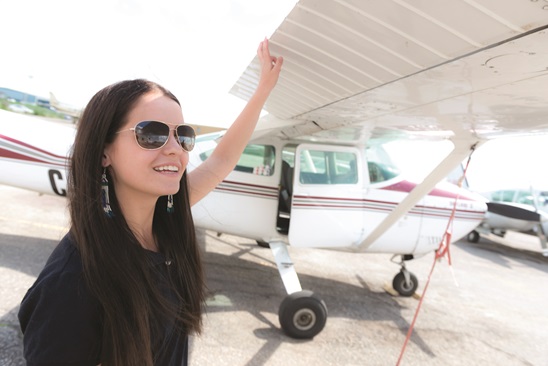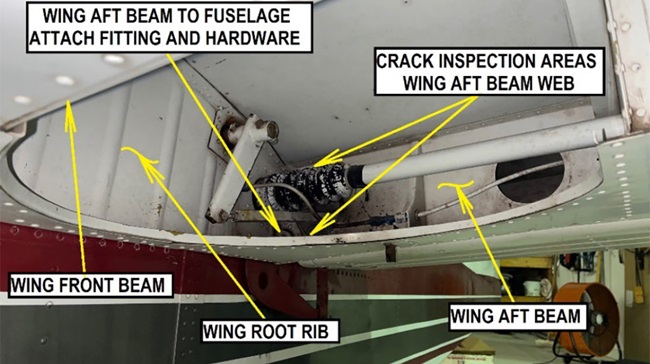If all of that sounds a bit cruel, or just plain nuts, it's to make a point. What was your first, visceral reaction to this idea of retaking a checkride--or a stage check or phase check, if you're still training--that you already passed? Was it akin to horror? Or was it a more serene response? If the idea made you recoil, it could be because deep down, you know that you wouldn't be able to pass that last checkride you took again today, cold turkey.
Cheer up. Most pilots probably couldn't. It's natural to relax a bit after a training goal has been accomplished. It's perfectly fine to say to yourself that you have earned the privilege of casting out of your life the training exercises that you found most loathsome, or simply irrelevant to your flying.
But here's the problem with letting a self-congratulatory state go on too long. Once you slack from flying to the standards required on a practical test, it is harder to get tough on yourself. Life is good with the autopilot coupled to the nav system on your cross-countries, and with no bellicose instructor there to mutter, "Keep holding her off," when you land.
Even at the 24-month mark, when it is time to complete a flight review, the results are often shaky. There, the regulations cut you some slack. The flight review--which is not a true flight test, it is always necessary to state--can be tailored to the pilot's tastes, with the tasks selected by the flight instructor you employ for the occasion. That's true for both the airwork and the ground session. Depending on just how shaky your flight review performance is, you can sometimes get by with a rueful look and a promise to practice. Not so on a checkride flown to the Practical Test Standards. Botch a maneuver to the point where its successful outcome is in doubt, or cause the examiner to intervene with your flying, and you're out of the game. There's a lot riding on a checkride; many pilots experience that level of scrutiny only once.
What are the first things to slip once a pilot puts the Practical Test Standards back on the shelf and vows never to look at it again? Here's a checklist of 10 items, in no particular order, that tend to slip the most and the quickest, as CFIs frequently see upon administering the pilot's next flight review.
Consider yourself fortunate every time you can look at one of these items and honestly say, "Not me."
1. Sterile cockpit: gone. From preflight to takeoff, the pilot who was once all business when getting ready to fly is now all chat. Everything around him at the airport seemed worthy of observation and comment. Taking time out from removing gust locks to greet a ramp chum is important. Pride in describing the capabilities of new equipment, or discussing future plans, is much more in evidence than pride in taxiing straight or listening for his N-number being called on the radio.
2. Fly heading: whatever. Who taught this guy to fly zigzag VFR? Not me. The big tip-off that we're not going to see a cunning display of navigational precision today is that he took off with the runway center line planted directly beneath the wing tip rather than under the nose. Any hand-flown navigation is sloppy, and inattention is the primary culprit. Seems that there are too many other things to focus on than to allow oneself to become distracted by cockpit chores.
3. Level off: more or less. Zigzag VFR, once established horizontally, works better if it has a vertical component too. No blaming turbulence. Altitude deviations are surprisingly large and well beyond practical test tolerances. More alarming than the offense itself is the pilot's seeming contentment, or ignorance, of being 300 feet off, mile after mile. New altimeter settings heard over the air go ignored.
4. See and avoid: avoid seeing. It stands to reason that inattention inside the cockpit extends outside as well. For the rest of us, it would be good to keep in mind that the aircraft you see off your wing tip may be in the hands of someone who is mentally elsewhere, but is about to start a turn in your direction.
5. Nice field down there. "Where would you go right now if the engine quit?" On hearing the question the pilot sits bolt upright and starts looking around. He never sees the private airfield that just slid under the nose--let alone visualizes which way he might approach it based on evidence of surface winds. If this were a practical test and the DPE yanked the engine right now--or if the engine were to commit a truly spiteful act of malfunction--there's little chance there would be a successful outcome.
OK, so those are five items of mental slackness common to pilots who are resting on their aero-laurels. Now let's look at what happens when the technique required to execute specific flying tasks to practical test standards is put to the test after some period of disuse.
6. Stealth traffic pattern. As the state of distractedness or apathy persists, arrival at a nontowered airport becomes a nonverbal event, perhaps until the pilot is established on downwind, or base, or wherever he chooses to enter the pattern. The presence of lots of traffic might make him think better of a stealth arrival, but observing the "formalities" is done reluctantly and with a resentful glance at the clock. Absent any arrival planning, cruise speed is maintained far too long, which can be a setup for what follows.
7. Flat earth, flat landing. Forget about hitting target airspeeds, so if there's a crosswind blowing, an overshoot or undershoot of final is all but guaranteed. Even in tranquil air, no goal such as getting down and stopped before a runway intersection or the first taxiway is set. We enter ground effect 15 knots too fast and float and float. Touchdown is nearly three-point, and there may well be a skip or two. How much flap was deployed for the approach follows no particular logic, checklist, or manufacturer's recommendation. The flaps are left down during taxi, and the carburetor heat--if it was remembered during the approach--is left on. Conversation resumes.
8. Do what? Go around. This final approach is going to pieces in a hurry. Trying to land this airplane on Runway 30 while it is heading 270 with the left wing down and excessive airspeed, a mere 20 feet above the pavement, is a really bad idea. Unfortunately it's a really bad idea that many pilots insist on attempting--and not because the pilot now considers himself so very skillful that he can pull out miracles on command. He just doesn't like the idea of going around. He probably hasn't practiced that maneuver since the checkride, and his confused, irresolute technique shows it.
9. Let's try some slow flight. "Let's not." But if you can coax him into the drill, an amazing transformation occurs. Almost all the physical skills required to perform routine flying well are in demand now. Flying at a nearly critical angle of attack, severe adverse yaw reminds him of the need to coordinate rudder with any aileron inputs. These aileron deflections must be shallow indeed--thus the concept of load factor and its effect on stall behavior comes rushing back. If altitude begins to slip, adding a touch of power, or lowering pitch--perhaps a touch of both--will bring altitude awareness back into focus. And yes, now that we have loosened up with a few minutes of this sort of thing, go ahead and slip on that view-limiting device. Hold your heading and altitude and don't let that stall horn stop blatting. Turn 45 degrees to the right, please (harder than turning left at these airspeeds) and remember to keep that bank very shallow. Now please continue the turn another 90 degrees, but in a shallow descent while maintaining airspeed. Level off at 3,000 feet...roll out on a heading of 180 degrees. Good job. So now are you ready for....
10. Some stalls? Groan... But don't worry, we'll have you back up to your old skill level in no time.
So, then, what besides constant oversight would keep a pilot from slacking off to the point of becoming pink-slip material? The answer is self-imposed motivation. Ironically, some pilots who have had accidents are the most meticulous afterward, just as that person who could never quit smoking succeeds in doing so after a sudden bout of angina. And it's an observable fact that pilots of tailwheel aircraft stay sharper without a CFI's nagging, because they have to.
For those of us not saddled with an accident history or blessed with a rear-wheeled ride, other motivations must suffice. Scheduling that mock checkride might help. (You can schedule this with an instructor instead of the examiner, and you don't really have to hand over your ticket.) Or just recall the checkride you already passed. Relive the sense of accomplishment you felt, and renew your appreciation of the fact that nothing so dearly earned should ever be taken for granted.
Dan Namowitz is an aviation writer and flight instructor. A pilot since 1985 and an instructor since 1990, he resides in Maine.



